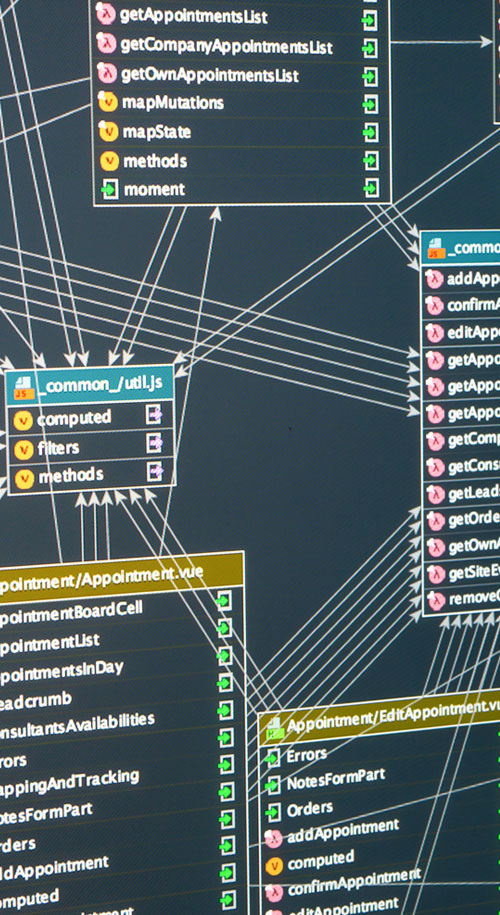
The Art of Effective Database Design
Expertly crafted databases meticulously designed to meet the unique needs of your industry, offering a tailored solution that aligns perfectly with your business requirements.
Through seamless integration of business logic, we ensure that your database doesn’t just store data but actively supports and enhances your core operations. This integration optimizes response times, enabling your organization to access critical information swiftly. Moreover, our databases are built with an unwavering focus on reliability, ensuring that your data is available when you need it, without compromise. Performance is another cornerstone of our design, with databases meticulously tuned to deliver exceptional speed and efficiency, making your systems truly agile and responsive.

Database Design
Database Design for Data Access, Security, and Performance Optimization
Database design plays a crucial role in ensuring efficient data access, robust security, and optimal performance. Proper indexing, query optimization, and partitioning minimize retrieval time. Security measures like authentication, access control, and encryption maintain data integrity. Performance techniques like denormalization, caching, and query tuning enhance system performance. A well-designed database balances data access, security, and performance, providing a reliable foundation for efficient data management.
What we offer
Empowering businesses with efficient and secure data management
Efficient data Access
Quick and easy retrieval of data. Get access to information promptly and efficiently.

Optimal Performance
Well-designed database entities optimize query execution and data retrieval, ensuring faster response times for database operations.

Flexibility and Scalability
Accommodates changes and growth in data and business requirements, making it easier to adapt and avoid extensive redesign.
Data Integration & Migration
Ensure consistency across platforms, timely data delivery, and secure transition from outdated systems to new databases.
Enhanced Maintainability
Simplify maintenance tasks, such as data updates, modifications, and troubleshooting, reducing the risk of errors.
Better Decision-Making
Derive meaningful insights from data, supporting decision-making and business intelligence activities.
Cost Savings
Minimize operational costs and resource requirements with optimized performance, reduced data redundancy, and improved maintainability.
Business Agility
Support business agility, enabling organizations to respond quickly and effectively to evolving needs and market demands.


Our Database Design Process
Delivering efficient, secure, and scalable solutions tailored to your unique business needs.

Requirements Gathering
Identifying and understanding the database system requirements, including its purpose, information type, expected functionality, constraints, and business rules.

Conceptual Design
Creating a high-level conceptual model of the database, including identifying entities, attributes, and relationships, focusing on the overall structure and organization.

Logical Design
Translating the conceptual model into a logical model, selecting the appropriate data model, converting entities and relationships into tables and keys, and performing normalization for data integrity.

Physical Design
Transforming the logical design into an actual database implementation, determining storage structures, optimizing performance, ensuring security measures, and establishing backup and recovery strategies.

Implementation
Translating the conceptual model into a logical model, selecting the appropriate data model, converting entities and relationships into tables and keys, and performing normalization for data integrity.

Testing and Evaluation
Thoroughly testing the implemented database to validate accuracy, reliability, and performance through data entry, retrieval, modification, and validation processes.

Deployment
Once the database design passes testing and evaluation, it is deployed into the production environment, ensuring a smooth transition for operational use.

Maintenance
Ongoing maintenance activities are performed to ensure the long-term operation and stability of the database system. This includes monitoring, performance tuning, security updates, and regular backup and recovery procedures.









